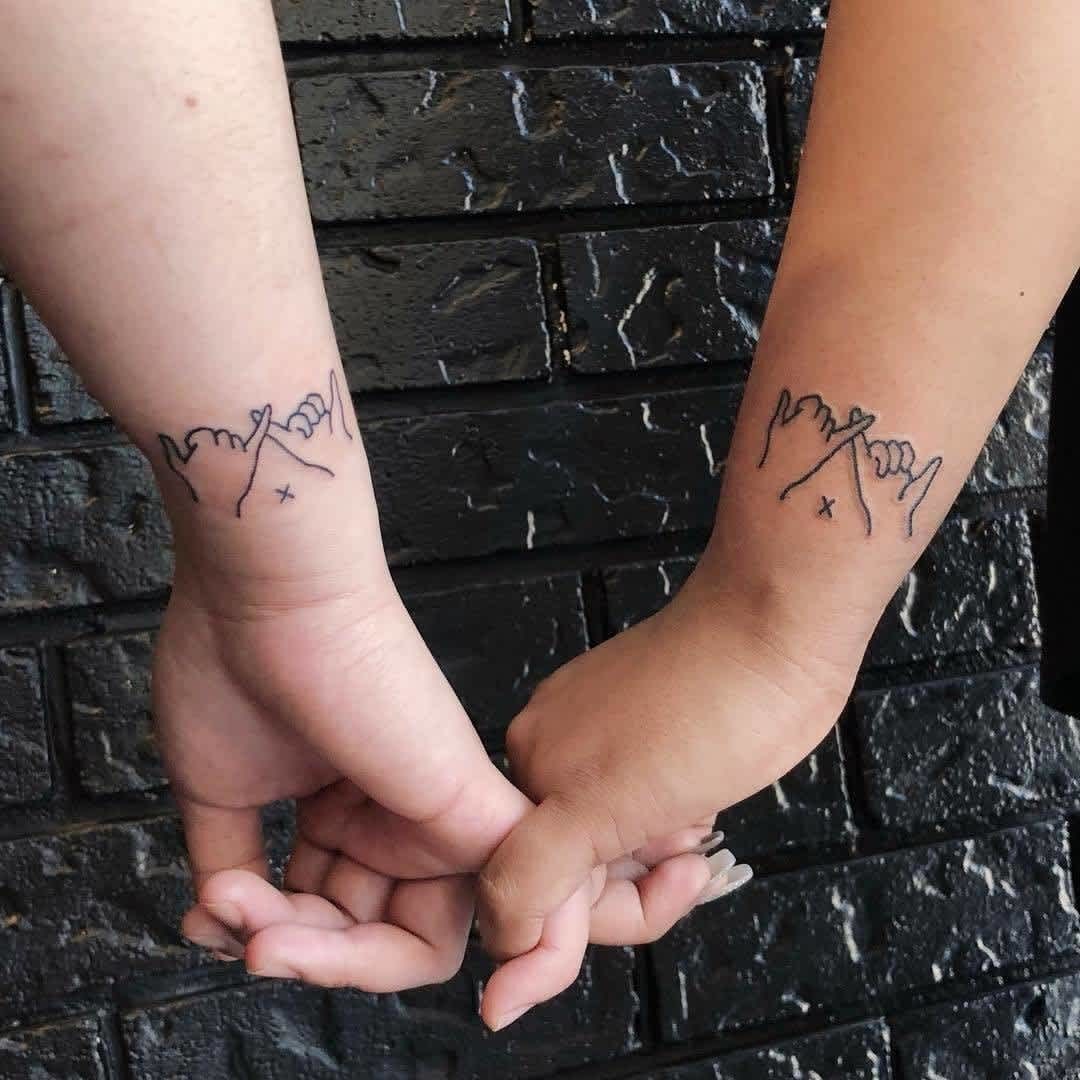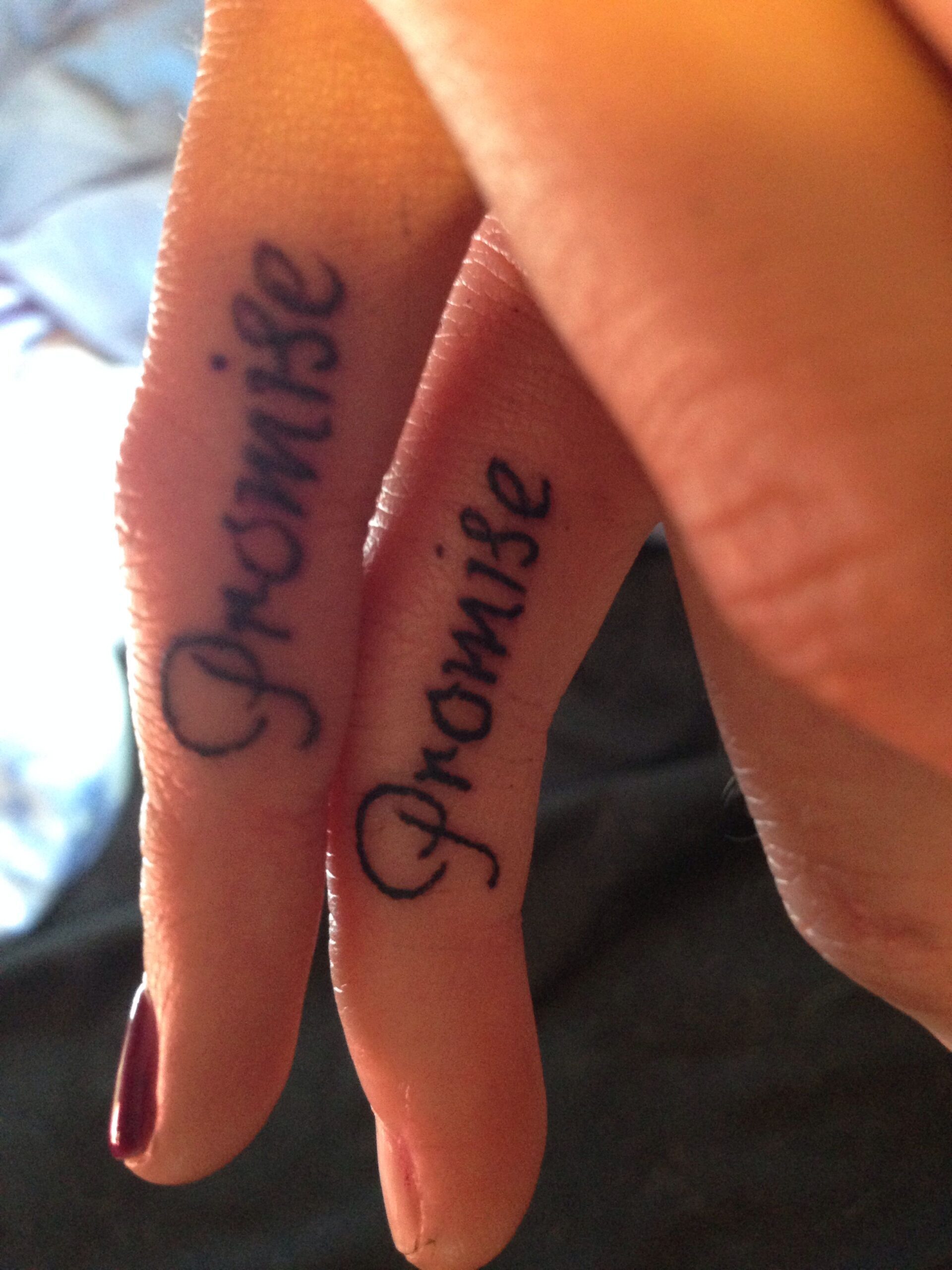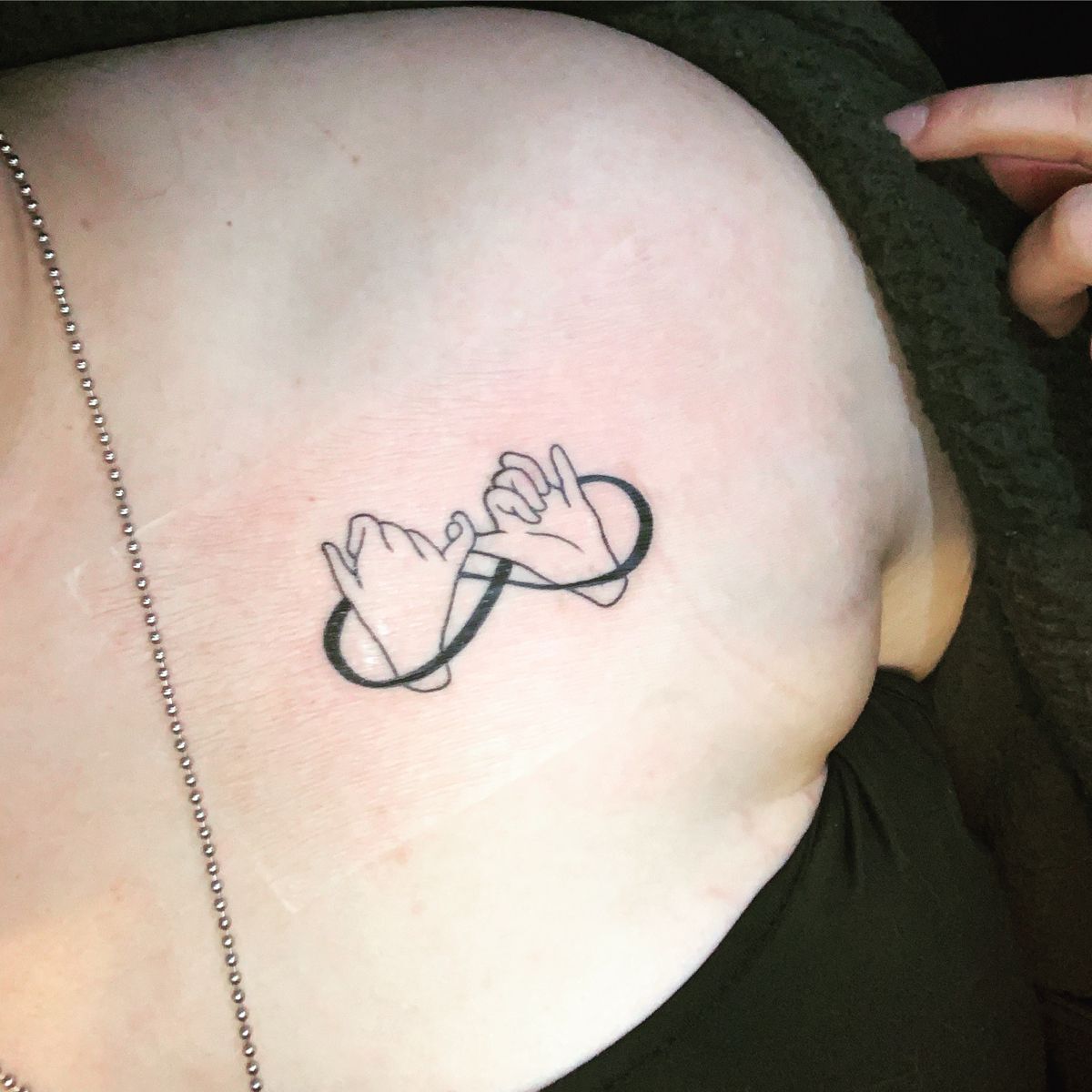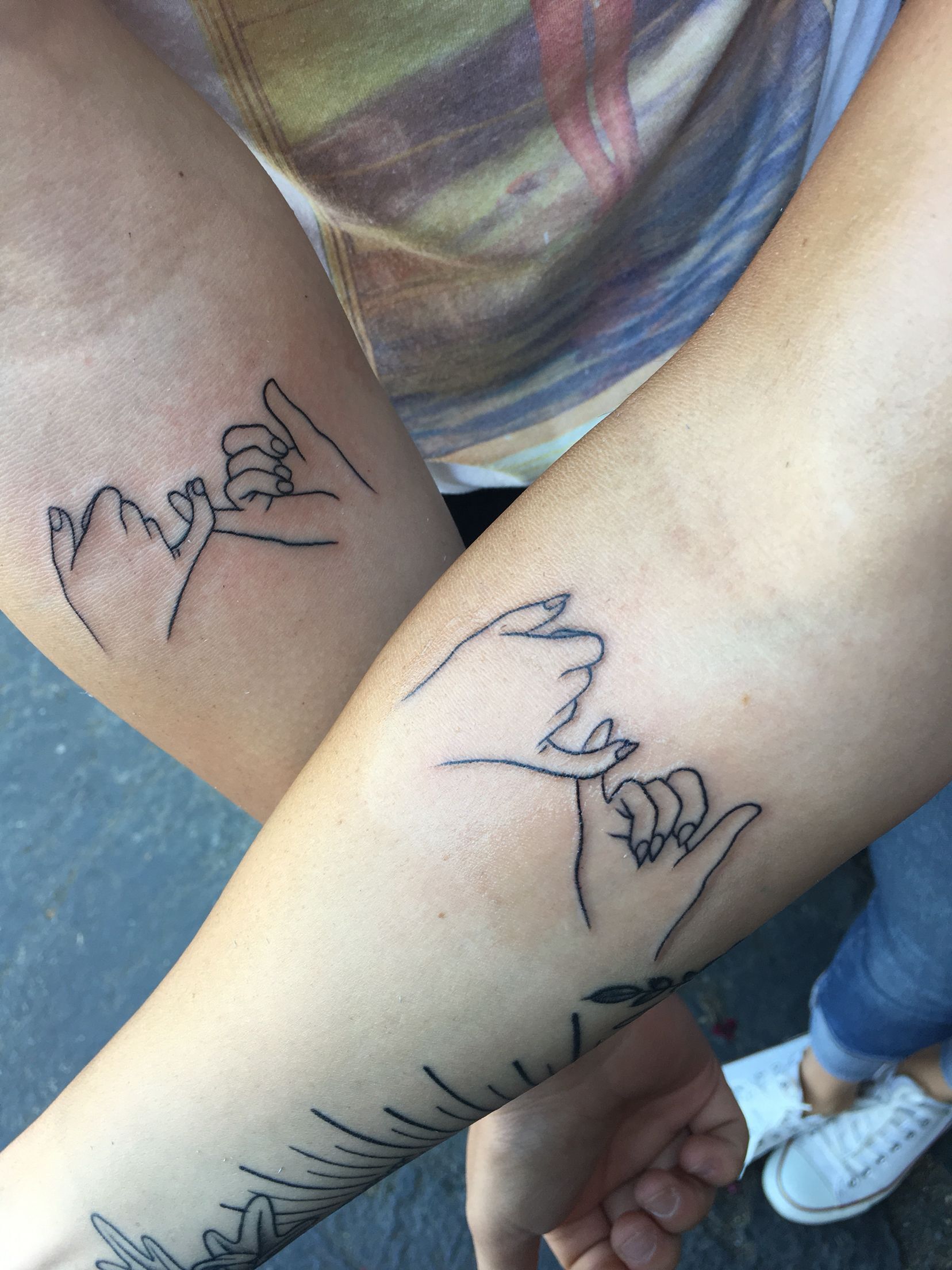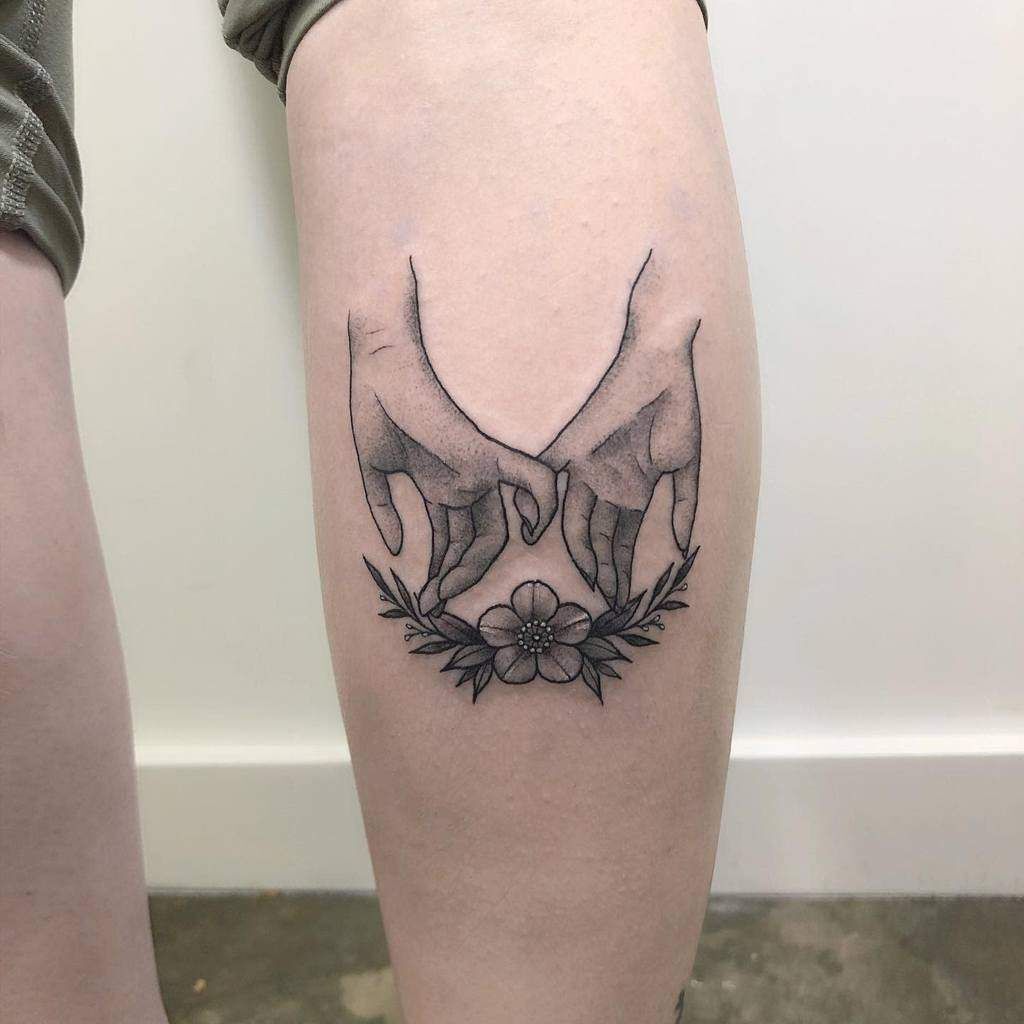Tattoo art has become a popular form of self-expression, with individuals choosing designs with personal significance. One tattoo that has gained popularity in recent years is the pinky promise tattoo. This tattoo represents a symbolic gesture of loyalty and trust and has a rich history and cultural significance. In this article, we'll explore the meaning and symbolism of pinky promise tattoos, some creative tattoo ideas, and the history and origins of this tattoo design in different cultures and countries.
Are you only interested in tattoo designs and want to skip the educational part?
No problem, we got you covered! Click HERE to get inspired.
Meaning and Symbolism of Pinky Promise Tattoos
A pinky promise, or a pinky swear, is a traditional gesture most common in Western cultures symbolizing a promise or pact between two parties. It involves the intertwining of the pinky fingers of two people, symbolizing the binding nature of their promise to each other. It's generally considered a sweet and innocent representation of trust, connection, and commitment.
As a tattoo, a pinky promise can be deeply symbolic and personal. Here are some of the most common interpretations:
Commitment and Promises: As you might expect, the primary symbolism of a pinky promise tattoo is a commitment or promise that is deeply important to the person getting the tattoo. This can represent a promise to oneself (such as a commitment to sobriety or self-love), or it can symbolize a promise made to someone else (like a commitment to a friend, partner, or family member).
Friendship and Connection: Pinky promises are often made between close friends or romantic partners, so a pinky promise tattoo can represent a deep bond of friendship or love. This might symbolize a best friend, a close sibling, or a significant other.
Memorial: Pinky promise tattoos can also serve as a memorial to a loved one who has passed away. In this context, the tattoo could represent a promise made to that person, or simply the ongoing connection and love for that person.
Childhood and Innocence: Pinky promises are often associated with childhood, so a pinky promise tattoo can represent a connection to one's youth, or a nostalgic remembrance of innocence and simplicity.
best Pinky Promise Tattoo placement Ideas and their meanings
A pinky promise tattoo is a delicate and heartfelt symbol of commitment, trust, friendship, and even love. Just like the endearing childhood gesture of intertwining pinky fingers to seal a promise, this tattoo signifies a pact that holds profound meaning for the wearer. Whether it's a personal commitment, a bond of friendship, a pledge of love, or a cherished memory, the pinky promise tattoo beautifully embodies these sentiments. The placement of this tattoo further enhances its meaning, varying from the subtle imprint on a pinky finger to a bold statement over the heart. Here are some of the top placement ideas and their associated meanings for a pinky promise tattoo.
Wrist pinky promise tattoo
The wrist is a popular place for a pinky promise tattoo because it's easily visible and serves as a constant reminder of the promise made. This placement often represents a commitment to oneself or a promise that directly influences daily actions.
Finger pinky promise tattoo
What could be more appropriate than having a pinky promise tattoo on your pinky finger? This is a subtle but impactful location that underscores the sincerity of your promise. It symbolizes a commitment so profound that it's etched onto the very finger used in making the promise.
Over the Heart/Chest pinky promise tattoo
Placing the tattoo over the heart can symbolize a deep, emotional commitment or bond. This could be a promise related to love, or a commitment made to a loved one. It can also serve as a reminder to always stay true to one's heart.
Inner Forearm pinky promise tattoo
This placement is great for larger, more detailed designs, and it's easily concealable with long sleeves. A pinky promise tattoo on the inner forearm can represent an outwardly-expressed commitment to others, as it's a placement that is often visible to others.
calf pinky promise tattoo
A pinky promise tattoo on the calf can be an attractive choice, especially for larger designs. This placement allows for easy concealment when needed, but it can also be highlighted when the wearer chooses. This location could symbolize a promise or commitment that propels one forward, much as the calves aid in moving us physically forward.
Who is a Pinky Promise Tattoo For?
A pinky promise tattoo can be a beautiful and meaningful choice for anyone who identifies with its symbolism. Here are some individuals who might consider getting a pinky promise tattoo:
Individuals Honoring a Promise or Commitment: If you've made a significant promise or commitment, either to yourself or to someone else, and you want a daily, visual reminder of that vow, a pinky promise tattoo can be a perfect choice.
Those Cherishing a Relationship: If there's a person in your life with whom you share a deep connection, a pinky promise tattoo can symbolize that bond. This could be a best friend, a sibling, a partner, or even a parent.
Those Remembering a Loved One: If you've lost someone close to you and you want to honor them and the bond you shared, a pinky promise tattoo can serve as a lasting memorial.
Individuals Embracing their Inner Child: If you cherish the innocence and simplicity of childhood and want to keep a piece of it with you as you navigate adulthood, a pinky promise tattoo can serve as a reminder of those days.
Those Making a Personal Pledge: If you've made a personal commitment, such as pursuing a dream, maintaining a lifestyle change, or promising self-love and care, a pinky promise tattoo can be a constant reminder of that personal pledge.
Ultimately, anyone who resonates with the symbolism of a pinky promise can consider getting such a tattoo. As always, the decision to get a tattoo should be well thought out and personal, and you should consider the commitment and permanence involved. Also, remember to always go to a professional, reputable tattoo artist to ensure your safety and satisfaction with the end result.
@lil.missa Don’t be sad go get a tattoo 🙂 #fyp #tattoo #pinkypromise #lesbian #lgbt ♬ bombs on monday - Georgie!
General Breakdown Of Tattoo Pain Levels On Different Body Parts
Here is a breakdown of the different tattoo pain levels:
- Low: This level of pain is generally described as a mild discomfort or tickling sensation. It is similar to the sensation of getting a light scratch or scrape.
- Moderate: This level of pain is generally described as a moderate discomfort or aching sensation. It is similar to the sensation of getting a deep scratch or scrape or being pinched.
- High: This level of pain is generally described as a strong discomfort or throbbing sensation. It is similar to the sensation of getting a burn or being stung by a bee.
It's important to note that pain tolerance is highly individual and can vary greatly from person to person. Some people may find certain body parts more or less painful than others, and the same body part can be more or less painful for different people. Additionally, the level of pain can be affected by factors such as the size and location of the tattoo, the skill of the tattoo artist, and the individual's own pain threshold.
Tattoo placement pain level chart
Body Part | Pain Level | Explanation |
Forehead | Low | The forehead has few nerve endings, so it is not a particularly painful area. |
Eyebrows | Low | The eyebrows have few nerve endings, so the pain level is relatively low. |
Ear | Low | The ear is a relatively thin and fleshy area, so the pain level is low. |
Nostril | Low | The nostril is a small area with thin skin, so the pain level is low. |
Lip | Low to Moderate | The lip has more nerve endings than some other areas, so it may be slightly more painful. |
Cheek | Low to Moderate | The cheek has a moderate amount of nerve endings, so it may be slightly more painful. |
Moderate | The neck has a moderate amount of nerve endings, so it may be slightly more painful. | |
Moderate to High | The chest has a high concentration of nerve endings, so it can be quite painful. | |
Abdomen | High | The abdomen has a high concentration of nerve endings, so it can be quite painful. |
Back | High | The back has a high concentration of nerve endings, so it can be quite painful. |
Shoulders | High | The shoulders have a high concentration of nerve endings, so they can be quite painful. |
Upper Arms | Moderate to High | The upper arms have a moderate to high concentration of nerve endings, so they can be somewhat painful. |
Elbows | High | The elbows have a high concentration of nerve endings, so they can be quite painful. |
Forearms | Moderate | The forearms have a moderate concentration of nerve endings, so they are not as painful as some other areas. |
Hands | High | The hands have a high concentration of nerve endings, so they can be quite painful. |
Lower Arms | Low to Moderate | The lower arms have a lower concentration of nerve endings, so they are not as painful as some other areas. |
Wrists | Low | The wrists have a low concentration of nerve endings, so they are not very painful. |
Lower Back | High | The lower back has a high concentration of nerve endings, so it can be quite painful. |
Buttocks | High | The buttocks have a high concentration of nerve endings, so they can be quite painful. |
Thighs | High | The thighs have a high concentration of nerve endings, so they can be quite painful. |
Knees | High | The knees have a high concentration of nerve endings, so they can be quite painful. |
Calves | Low to Moderate | The calves have a low to moderate concentration of nerve endings, so they are not as painful as some other areas. |
Ankles | Low | The ankles have a low concentration of nerve endings, so they are not very painful. |
Tattoo aftercare tips
Before getting a tattoo:
Choose a reputable tattoo artist and parlor. Research the artist's portfolio and read reviews from previous clients.
Consult with the artist about the design and placement of the tattoo.
Make sure you are in good health. If you have any medical conditions or are taking any medications that may affect your ability to heal, be sure to let your tattoo artist know.
Consider using a numbing cream to reduce pain during the tattooing process. These creams contain a numbing agent (such as lidocaine) that can be applied to the skin before the tattoo is done. It's important to follow the instructions on the numbing cream and to only use it as directed.
Avoid alcohol, caffeine, and other substances that can thin your blood for at least 24 hours before getting a tattoo.
Eat a healthy meal before your tattoo session to ensure that your blood sugar is stable.
Wear loose, comfortable clothing that allows easy access to the area being tattooed.
After getting a tattoo:
Follow the aftercare instructions provided by your tattoo artist. These may include:
Keeping the tattoo clean and covered with a bandage for the first few hours after getting tattooed.
Washing the tattoo with lukewarm water and a mild soap (such as unscented, antimicrobial soap) and patting it dry with a clean towel.
Applying a thin layer of tattoo ointment or lotion (such as A&D or Aquaphor) to the tattoo and covering it with a clean bandage or wrap.
Repeating this process for the first few days, or until the tattoo has fully scabbed over.
Avoid soaking the tattoo in water for the first week, such as in a bath or pool.
Avoid picking or scratching at the scabs, as this can cause the tattoo to fade or become infected.
Avoid exposure to direct sunlight or tanning beds for at least 2-4 weeks.
If you experience any redness, swelling, or unusual discharge, contact your tattoo artist or a healthcare professional.
Overall, it's important to keep your tattoo clean and moisturized during the healing process to ensure that it heals properly and looks its best. Using a numbing cream can help reduce pain during the tattooing process, but it's important to use it as directed and to follow all aftercare instructions to ensure that your tattoo heals properly.
People Also Ask:
What is the significance of the pinky finger in a pinky promise?
The pinky finger is used in a pinky promise because it is the smallest and weakest finger, symbolizing vulnerability and trust.
Can a pinky promise tattoo be made between romantic partners?
Yes, a pinky promise tattoo can be made between romantic partners as a symbol of their special bond and commitment.
Is a pinky promise tattoo only for close friends and family members?
While a pinky promise tattoo can be a meaningful design for close friends and family members, it can also symbolize commitment and trust in any relationship. It is a personal choice and can be tailored to fit individual needs and values.
Can a pinky promise tattoo be combined with other designs or symbols?
A pinky promise tattoo can be combined with other designs or symbols to create a unique and personalized tattoo. Some ideas include adding a heart or infinity symbol, incorporating a phrase or quote, or combining the tattoo with other symbols representing loyalty and trust.
Is a pinky promise tattoo a popular choice among tattoo enthusiasts?
Pinky promise tattoos have gained popularity recently and are a common choice among tattoo enthusiasts. They are a meaningful and personal design that allows individuals to express their values and commitments uniquely.
Watch A Full Time-Lapse Video Of A pinky promise Tattoo Done By A Pro:
175+ pinky promise Tattoo Ideas For Your Inspiration
Final thoughts:
Pinky promise tattoos are a meaningful and personal way to express loyalty and trust in relationships. Whether you are looking to commemorate a special bond with a friend or loved one or want to show your commitment to your values, a pinky promise tattoo can be a powerful and enduring symbol. Consider incorporating this design into your tattoo artist and promise yourself or others that you'll always stand by it.

